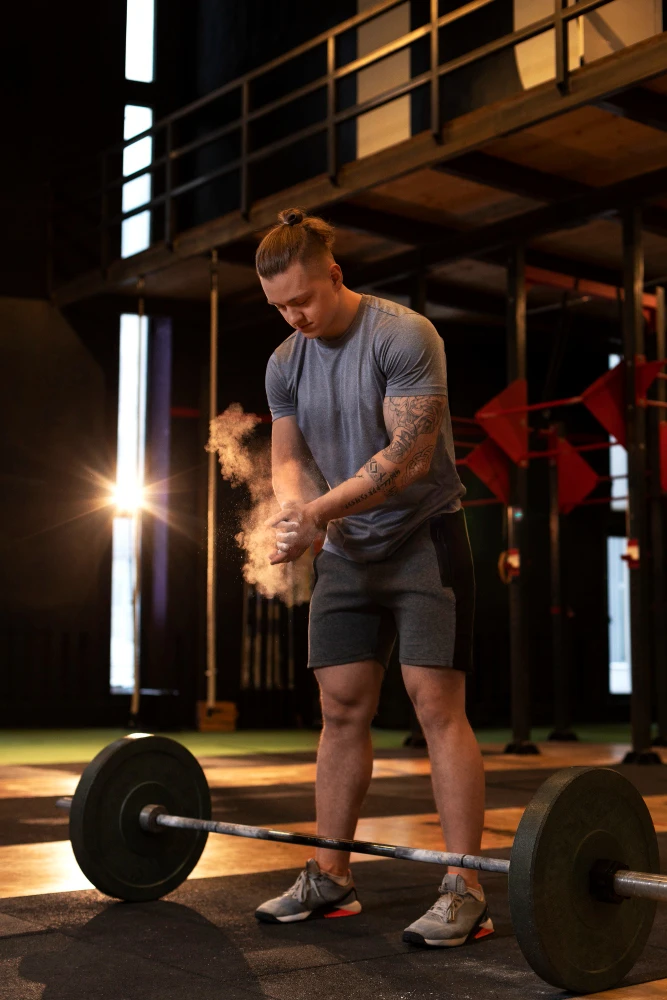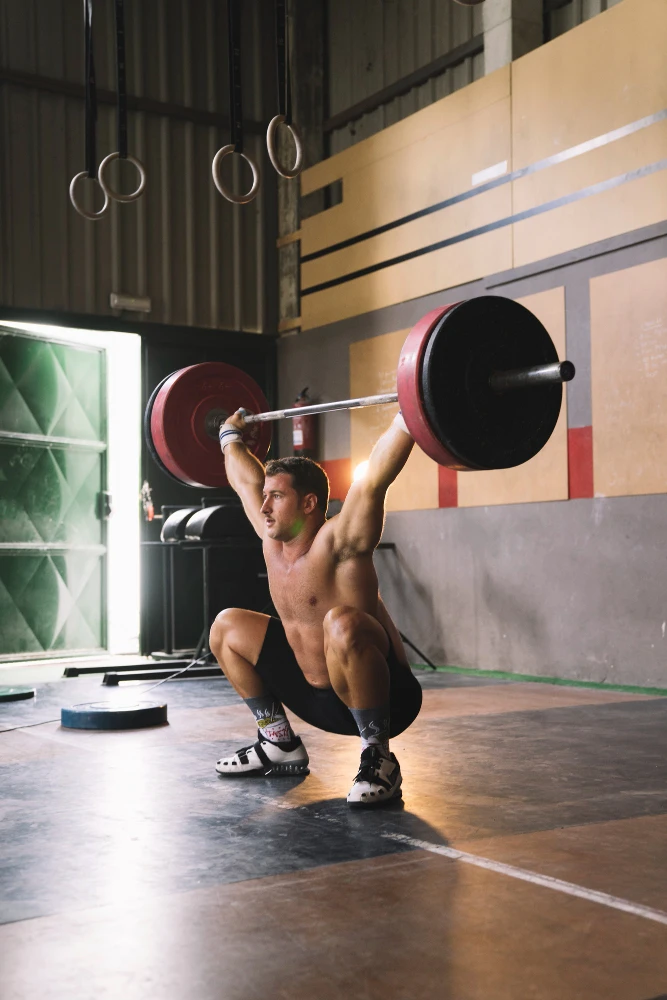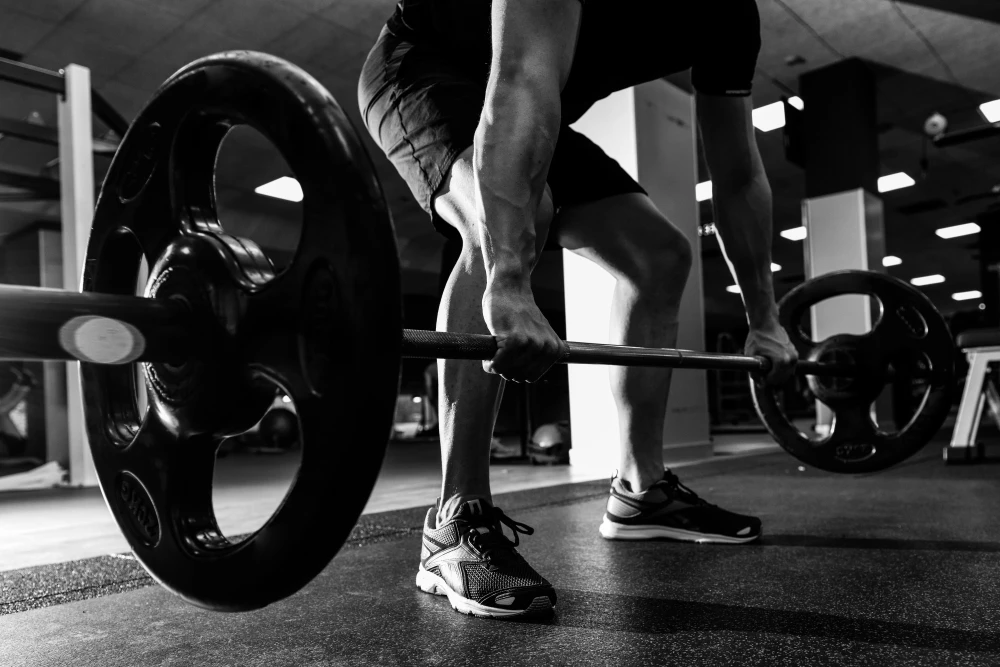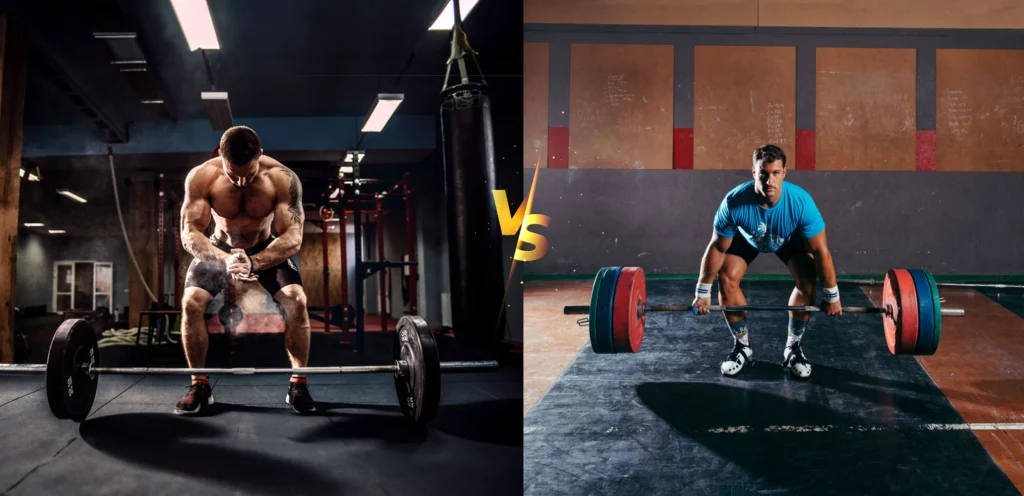When it comes to strength training, there are two types of lifting that often come up in conversation: powerlifting and Olympic lifting. Although they may seem similar, these two types of lifting have fundamental differences in technique, goals, and benefits.
So which one is right for you?
In this post, we will explore the key differences between powerlifting and Olympic lifting and help you decide which style is best suited for your fitness goals. We will also discuss the benefits of each type of lifting and provide insights into basic techniques and nutrition required for weightlifters.
What are Powerlifting?
Powerlifting involves three lifts: squat, bench press, and deadlift. It focuses on lifting maximum weight in each lift. Olympic lifting includes snatch and clean and jerk, focusing on technique and speed. Each sport has its own benefits and challenges; choose the one that aligns with your fitness goals.
What is Olympic lifting?
Olympic weightlifting is a sport in which athletes compete in lifting a barbell loaded with weight plates from the ground to overhead, with the aim of successfully lifting the heaviest weights. Athletes compete in two specific ways of lifting the barbell overhead:
- The snatch is a wide-grip lift, in which the weighted barbell is lifted overhead in one motion.
- The clean and jerk is a combination lift, in which the weight is first taken from the ground to the front of the shoulders (the clean), and then from the shoulders to over the head (the jerk).
Olympic weightlifting uses a steel bar (also known as a barbell) with larger-diameter rotating sleeves on either end, holding rubber-coated weight plates of different weights. This sleeve rotation is important for the Olympic lifts, particularly the snatch and clean movements, because it drastically reduces the rotational inertia of the bar.
Benefits of Powerlifting
Powerlifting is a strength sport that involves three lifts: the squat, bench press, and deadlift. It is a great way to build strength, muscle mass, and overall fitness. Powerlifting can also help to improve bone density, reduce the risk of injury, and improve mental health.
Here are some of the benefits of powerlifting:
Improved strength: Powerlifting is a great way to build strength. The three lifts that are involved in powerlifting work all of the major muscle groups in the body. As you get stronger, you will be able to lift heavier weights, which will further increase your strength.
Increased muscle mass: Powerlifting can also help to increase muscle mass. When you lift heavy weights, your body is forced to adapt by building more muscle. This can lead to a more muscular and toned physique.

Improved bone density: Powerlifting can help to improve bone density. Bone density is important for preventing osteoporosis, a condition that causes bones to become weak and brittle. Lifting weights can help to stimulate bone growth and strengthen existing bone tissue.
Reduced risk of injury: Powerlifting can help to reduce the risk of injury. When you lift weights safely and correctly, you are less likely to injure yourself. Powerlifting can also help to improve your balance and coordination, which can further reduce your risk of injury.
Improved mental health: Powerlifting can also have a positive impact on mental health. Lifting weights can help to reduce stress, anxiety, and depression. It can also boost self-confidence and self-esteem.
If you are looking for a way to improve your strength, muscle mass, and overall fitness, powerlifting is a great option. It is a safe and effective way to train, and it can offer a number of benefits for your physical and mental health.
Here are some tips for getting started with powerlifting:
- Find a qualified coach or trainer who can help you learn the proper technique for the three lifts.
- Start with a weight that is challenging but not too heavy. You should be able to complete all three lifts with good form.
- Increase the weight gradually over time as you get stronger.
- Listen to your body and take rest days when you need them.
- Be patient and consistent with your training. It takes time to build strength and muscle mass.
Powerlifting can be a great way to improve your health and fitness. With proper training and dedication, you can achieve your fitness goals and enjoy the many benefits of powerlifting.

Benefits of Olympic Lifting
Olympic weightlifting is a great way to improve your strength, speed, power, and overall fitness. It is also a very safe and effective way to train, as long as you are properly trained and supervised.
Here are some of the benefits of Olympic weightlifting:
Increased strength: Olympic weightlifting helps to build strength throughout the entire body, including the legs, glutes, back, shoulders, and arms.
Increased speed: Olympic weightlifting helps to improve speed by teaching your body to move more efficiently and explosively.
Increased power: Olympic weightlifting helps to develop power, which is the ability to generate force quickly. Power is important for many sports and activities, such as sprinting, jumping, and throwing.
Improved coordination: Olympic weightlifting requires a high degree of coordination and balance. This can help to improve your coordination in other activities, such as sports and everyday tasks.
Reduced risk of injury: Olympic weightlifting can help to reduce your risk of injury by strengthening your muscles and joints. It can also help to improve your posture and alignment.
Improved mental health: Olympic weightlifting can help to improve your mental health by reducing stress, anxiety, and depression. It can also help to improve your self-confidence and self-esteem.
If you are interested in trying Olympic weightlifting, it is important to find a qualified coach who can teach you the proper technique. Olympic weightlifting can be a very rewarding experience, and it can help you to improve your health and fitness in many ways.
Here are some additional benefits of Olympic weightlifting:
- Increased bone density: Olympic weightlifting can help to increase bone density, which can help to reduce your risk of osteoporosis.
- Improved cardiovascular health: Olympic weightlifting can help to improve your cardiovascular health by increasing your heart rate and blood flow.
- Weight loss: Olympic weightlifting can help you to lose weight and body fat.
- Increased energy levels: Olympic weightlifting can help to increase your energy levels and improve your overall mood.
If you are looking for a challenging and rewarding workout, Olympic weightlifting is a great option. It is a safe and effective way to improve your strength, speed, power, and overall fitness.
Olympic Lifting vs Powerlifting: Which Lifting Style is Right for You?
Olympic lifting and powerlifting are two popular forms of strength training that can help you build muscle, improve your strength, and boost your athleticism. However, there are some key differences between the two sports that you should consider before choosing one over the other.
Olympic Lifting
Olympic lifting is a sport that involves two lifts: the snatch and the clean and jerk. The snatch is a complex lift that involves lifting the barbell from the floor to overhead in one motion. The clean and jerk is a two-part lift that involves lifting the barbell from the floor to the shoulders (clean) and then from the shoulders to overhead (jerk).
Olympic lifting is a technical sport that requires a great deal of skill and coordination. It is also a very demanding sport that can put a lot of stress on your joints. However, if you are looking for a sport that will help you build explosive power and strength, then Olympic lifting is a great option.
Powerlifting
Powerlifting is a sport that involves three lifts: the squat, the bench press, and the deadlift. The squat is a compound exercise that works the muscles in your legs, hips, and back. The bench press is a compound exercise that works the muscles in your chest, shoulders, and triceps. The deadlift is a compound exercise that works the muscles in your legs, hips, back, and shoulders.
Powerlifting is a less technical sport than Olympic lifting, but it is still a very demanding sport that can put a lot of stress on your joints. However, if you are looking for a sport that will help you build raw strength, then powerlifting is a great option.
Which Lifting Style is Right for You?
The best way to decide which lifting style is right for you is to consider your goals and your fitness level. If you are looking for a sport that will help you build explosive power and strength, then Olympic lifting is a great option. If you are looking for a sport that will help you build raw strength, then powerlifting is a great option.
If you are new to strength training, it is a good idea to start with a general strength training program that includes a variety of exercises. Once you have built a solid foundation of strength, you can then decide if you want to specialize in Olympic lifting or powerlifting.
Here are some additional factors to consider when choosing between Olympic lifting and powerlifting:
- Your goals: What are your goals for strength training? Are you looking to build muscle, improve your strength, or compete in a sport?
- Your fitness level: How fit are you? If you are new to strength training, you may want to start with a general strength training program before specializing in Olympic lifting or powerlifting.
- Your time commitment: How much time do you have to commit to strength training? Olympic lifting and powerlifting can be both time-consuming and demanding.
- Your budget: How much money are you willing to spend on strength training? Olympic lifting and powerlifting can require specialized equipment and training.
Ultimately, the best way to decide which lifting style is right for you is to try both and see which one you enjoy more.
When choosing between Olympic lifting and Powerlifting, understanding their key differences is crucial. While Powerlifting focuses on maximal strength, Olympic lifting prioritizes explosive power and technique. Both sports require impeccable form and technique to prevent injuries. If you’re seeking technical proficiency and explosiveness in your workouts, consider giving Olympic lifting a shot. However, if you’re looking to build overall strength and mass, then Powerlifting is an excellent option to explore.

Basic Techniques of Olympic Lifting
- The Snatch Technique
The snatch technique in Olympic lifting is a challenging but rewarding lift that demands explosive power and precise coordination with the barbell. The lifter starts in a standing position with feet hip-width apart and toes under the barbell. Then he/she pulls the bar off the ground using explosive strength while keeping it close to the body until reaching the knees. In the second pull phase, they extend their hips and knees to generate enough force to propel the.
- The Clean and Jerk Technique
To execute the Clean and Jerk technique in Olympic lifting, you must lift the barbell from ground level to shoulder height in one fluid movement before pushing it overhead. This requires explosive power and excellent form, including proper alignment of your shoulders, elbows, wrists, hips, knees, feet, and core muscles. Beginners should focus on mobility and coordination exercises before attempting this technique with a barbell. Remember to maintain proper form throughout each rep to avoid injury while maximizing your potential for explosive strength gains.
Basic Techniques of Powerlifting
Proper technique is essential in Powerlifting that involves 3 core lifts – squat, bench press and deadlift. Progressive overload training is the key to improve strength for better explosive power with accessory exercises targeting specific muscle groups for an overall improved performance.
- The Deadlift Technique
Proper execution of the deadlift starts with setting up your standing position with feet hip-width apart and gripping the barbell shoulder-width apart. You must maintain a neutral spine during the exercise while keeping shoulders pulled back and chest out to prevent lower back strain. Driving hips forward and pushing through heels will help lift the weight off the ground. It’s wise to seek guidance from trainers for ideal form practices for maximum mobility and explosive strength gains without injuries.
- The Squat Technique
To execute the squat technique for Olympic lifting effectively, it’s essential to maintain proper form and technique. Begin by positioning yourself with feet shoulder-width apart while pointing slightly outwards; this is known as the squat position. Descend until your hip crease is below your knee level without rounding your back or letting your knees cave inwardly. Engage your core and glutes while pushing through your heels to stand back up. With consistent practice and proper form, you can increase explosive power and strength that are crucial for Olympic weightlifting.
- The Bench Press Technique
Maintaining proper technique during the bench press is crucial for powerlifting success. Your feet should be flat on the floor with an arched back as you grip the bar shoulder-width apart and lower it to your chest before pressing upwards. It’s vital to control the bar throughout the lift and avoid bouncing it off your chest. With consistent practice, correct form in this Olympic lifting exercise can lead to significant strength gains and improved athletic performance.
Let’s Sum Up
In conclusion, both powerlifting and Olympic lifting have their unique benefits and training techniques. It ultimately comes down to your personal goals and preferences. If you are interested in explosive movements, developing athleticism, and increasing muscle mass, then Olympic lifting might be right for you. On the other hand, if you want to focus on building pure strength and improving bone density, then powerlifting might be more suitable. Regardless of which style you choose, proper nutrition is crucial for optimal performance.
You May Also Like
- Powerlifting: Tips and Tricks for Building Strength and Dominating the Competition
- Powerlifting for Beginners: A Stronger Future Starts Today
- The Ultimate Guide to Bodybuilding Supplements: What to Take and When
- Fueling Your Gains: A Comprehensive Guide to Bodybuilding Diet



